
Gas prices skyrocketed during the oil crisis of the 1970s.
1973
Members of the Organization of Arab Petroleum Exporting Countries impose an oil embargo on the United States during the 1973 Arab-Israeli war. Oil prices increase by up to 400% and gas shortages occur across the country.
1973
1975
1975
The Energy Policy and Conservation Act of 1975 responds to the oil crisis by initiating a comprehensive approach to federal energy policy, including increasing supply and reducing demand through conservation and efficiency. The first fuel economy standards and household appliance efficiency standards are established.

President Gerald Ford makes a statement in the White House press briefing room upon signing the Energy Policy and Conservation Act.

1976
The Energy Conversation and Production Act provides further incentives for energy efficiency, including the establishment of the Weatherization Assistance Program, which offers low-cost efficiency upgrades to low-income households.
1976
1977
1977
Senators Charles Percy and Hubert Humphrey found the Alliance to Save Energy to advance energy efficiency solutions. The Alliance is incorporated on March 18, 1977.
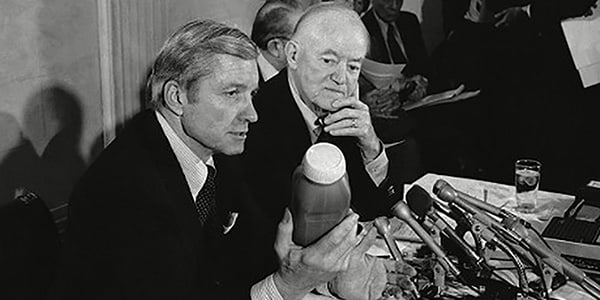
Sens. Charles Percy (left) and Hubert Humphrey at a press conference on their new coalition.
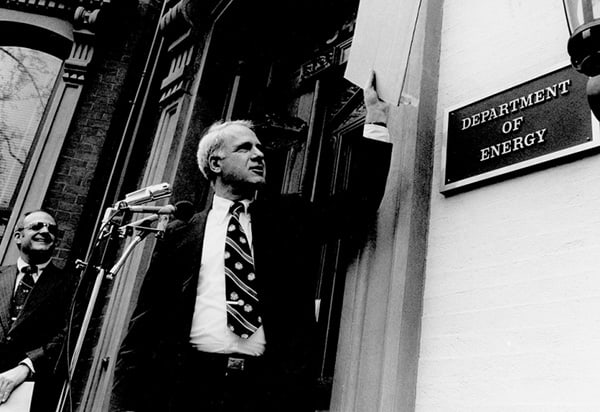
The first U.S. Secretary of Energy, James Schlesinger, stands outside the new Department of Energy.
1977
President Jimmy Carter signs into law the Department of Energy Organization Act on Aug. 4, 1977, establishing the Department of Energy to coordinate energy policy and programs. Energy efficiency and renewable energy programs receive major funding support.
1977
1978
1978
Automobile fuel efficiency standards (CAFE) take effect, resulting in a doubling of the average new car’s fuel efficiency – eventually saving the U.S. 2.8 million barrels of oil per day.
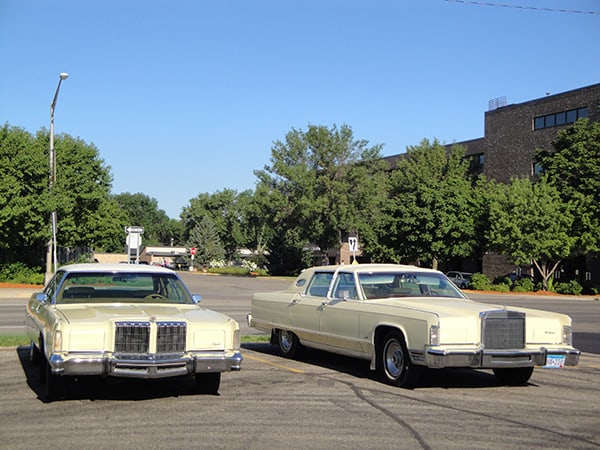
1978
The Alliance mounts its first national TV public service advertising campaign. Gregory Peck promotes energy conservation by declaring “Don’t Blow it America.”
1978
1978
1978
The first energy efficiency tax incentives are created to incentivize consumers to make efficiency investments to their homes.
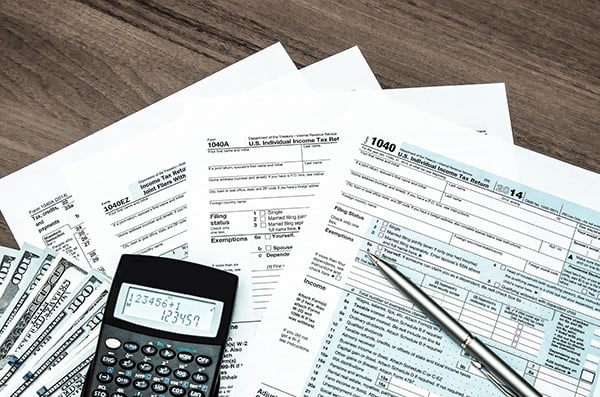

Study author Robert Stobaugh (left) and co-editor Daniel Yergin helped popularize energy efficiency.
1979
Alliance Board Member Robert Stobaugh’s Harvard study, Energy Future, popularizes energy efficiency as a new solution to the nation’s energy crunch.
1979
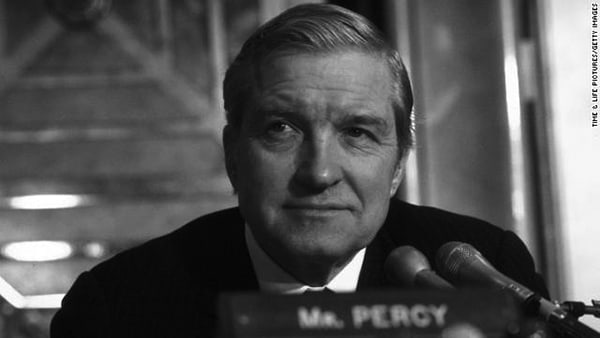
Alliance co-founder Sen. Charles H. Percy
1982
The Alliance to Save Energy designs the first methodology to evaluate efficiency as an energy resource for a public utility. Quote from Senator Charles H. Percy, March 17, 1983:
"As a model of citizen and corporate cooperation, the Alliance shows the way this country really operates – government working with the private sector, labor, management, and consumers united to solve a national problem."
1982
1984
1984
Alliance Chairman Senator John Heinz advocates for legislation (later enacted) that allows governors to shift fuel assistance funds to energy efficiency upgrades for low-income homes.
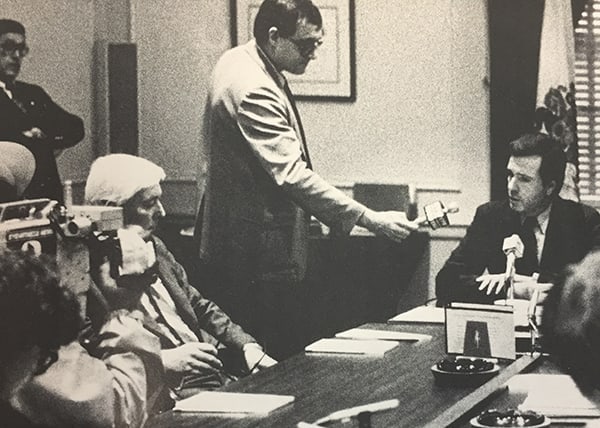

1984
Alliance develops a training and technical assistance program on Energy Saving Performance Contracting (ESPC), an innovative, private sector financing technique for energy efficiency projects.
1984
1987
1987
The National Appliance Energy Conservation Act of 1987 establishes minimum efficiency standards for many household appliances and sets a schedule for DOE to update these standards.


1988
The Alliance, together with United Way of America, helps non-profit service agencies across the country finance energy efficiency improvements to their buildings through innovative pooled performance contracting.
Quote from Senator J. Bennett Johnston, Jan. 28, 1988, Chairman, Committee on Energy and Natural Resources:
"The need for Alliance to Save Energy is more important today than it has even been…Not because there is a shortage today, but because we need to raise energy efficiency awareness before there is a crisis."
1988
1990
1990
Energy efficiency provisions crafted by the Alliance for the National Affordable Housing Act of 1990 help expand access to efficient and affordable housing.


1991
The Alliance establishes its new corporate partnership Associates program, committed to working with a diverse group of interests to promote the benefits of energy efficiency.
1991
1992
1992
Following years of legislative effort, congressional testimony and collaboration with industry partners by the Alliance, the Energy Policy Act of 1992 is signed into law including major energy efficiency programs to improve federal energy management, building codes and lighting, equipment standards, and home energy ratings.

Congress considers the Energy Policy Act of 1992.
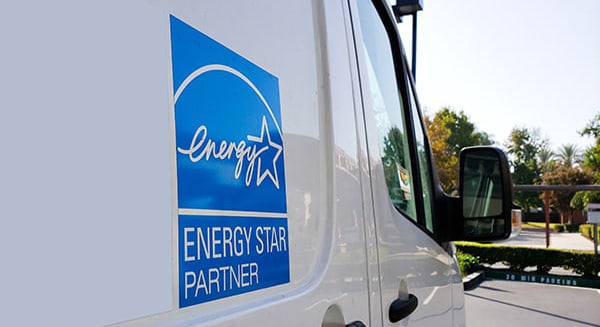
1992
The Environmental Protection Agency introduces ENERGY STAR, a voluntary program to help consumers and businesses identify energy-efficient products.
1992
1993
1993
The Alliance presents the first annual Star of Energy Efficiency Award to Sen. Timothy E. Wirth (D-Colo.).
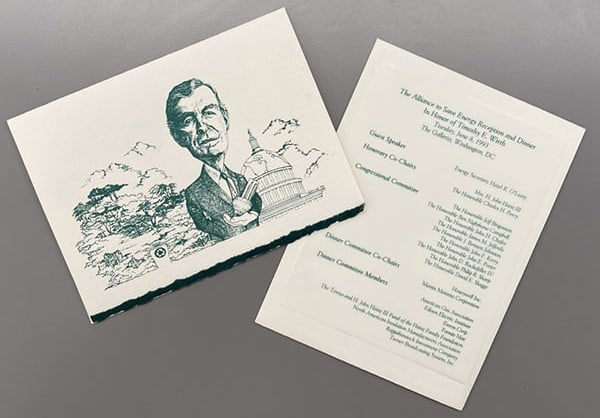
Sen. Timothy E. Wirth is honored at the first annual Evening with the Stars of Energy Efficiency Awards Gala.

1995
Taking to the airwaves once again with the Campaign to Save Energy, the Alliance attempts to redefine the concept of energy efficiency in the minds of consumers. Ads air in 60 of the nation’s largest markets.
1995
1996
1996
The Alliance opens its first overseas office in Kaliningrad, Russia, followed closely by offices in Ukraine and Hungary the following year.
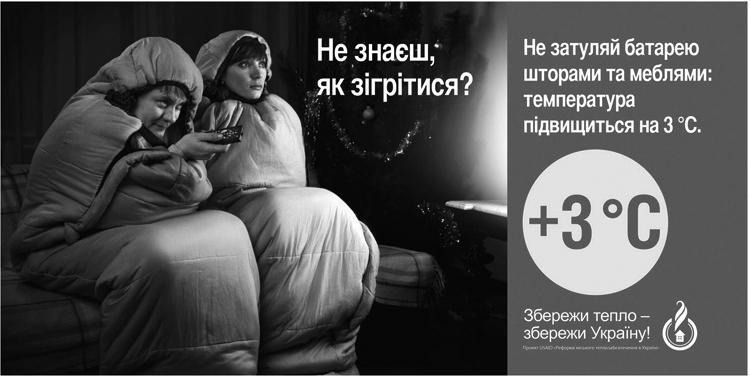
Alliance led Ukrainian advertising campaign promoting energy efficiency policies.

Delegates attend the Kyoto Convention on Climate Change.
1997
Leading up to the Kyoto Convention on Climate Change, the Alliance releases Energy Innovation: A Prosperous Path to a Clean Environment, a groundbreaking report outlining measures to guide the economy toward more secure, lower cost, less polluting means of producing energy.
1997
1998
1998
The first International Energy Conservation Code establishes model guidance for states and localities on building efficiency codes. The IECC is updated every three years.

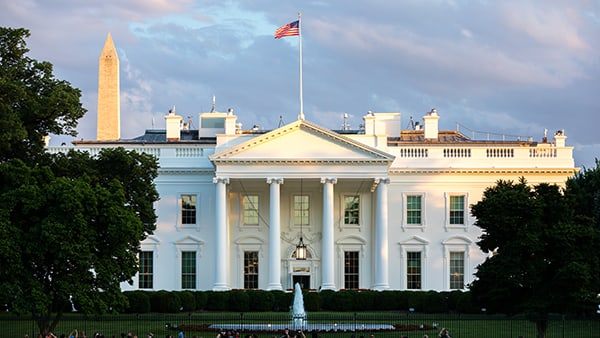
1998
Working with a coalition of states and advocacy groups, the Alliance helps secure a $45 million increase in funding for federal energy efficiency programs.
1998
1999
1999
Spurred by the Alliance’s report, Leading By Example: Improving Energy Productivity in Federal Government Facilities, President Clinton issues an executive order calling for the federal government to reduce its energy use 35% and cut its greenhouse gas emissions 30% by 2010.

President Bill Clinton signs an executive order.
2000
2000
The Alliance helps negotiate a rule with the Department of Energy that will increase the efficiency of clothes washers 35% by 2007, saving more than four quads of energy.

2002
Alliance sponsored Static Electricity House TV public service ad is judged and voted the #2 greatest commercial in the world.
2002
2004
2004
The Alliance initiates its Green Campus program, working with California universities to introduce the concepts of energy efficiency and conservation into course curricula and campus life.

President George W. Bush (right) holds the box containing the energy bill after signing the Energy Policy Act of 2005.
2005
Working with a coalition of industry experts and congressional leaders, the Alliance ensures energy efficiency provisions are a driving force in the Energy Policy Act of 2005. When it is signed into law, the act makes history with energy efficiency included as Title 1.
2005
2006
2006
The Southeast Energy Efficiency Alliance, a subsidiary of the Alliance, is officially incorporated as a 501c3 organization in Georgia, bringing much needed resources and focus on energy efficiency to the southeast U.S.
Quote from Senator Mark Pryor, Alliance Chairman, November 16, 2006:
"As we embark on the new Congress, I’m looking forward to working with the Alliance to build a comprehensive approach that encourages improved energy efficiency from farms to factories and homes to headquarters."

Alliance Honorary Advisor Rep. Edward Markey speaks in favor of the Energy and Independence Security Act.
2007
The Alliance celebrates its 30th anniversary with federal enactment of the most sweeping legislation in three decades, the Energy and Independence Security Act (EISA 2007), projected to reduce national energy consumption by 7%.
2007
2007
2007
The Alliance hosts the first annual Energy Efficiency Global Forum in Washington, D.C., drawing hundreds of speakers representing 32 countries to provide a global perspective on the opportunity of energy efficiency.

The Alliance hosts a Drive $marter Challenge press event.
2008
The Drive $marter Challenge, a consumer campaign with Walmart Foundation and 18 other partners, saves consumers $1,234,543; 334,543 gallons of gas, and 34,543 metric tons of CO2 by encouraging more efficient driving.
2008
2009
2009
The Alliance oversees the formation of the Australian Alliance to Save Energy (A2SE) and based on a call to action from Member of the European Parliament Claude Turmes at EE Global in Paris, the Alliance begins working with European partners to create the European Alliance to Save Energy.
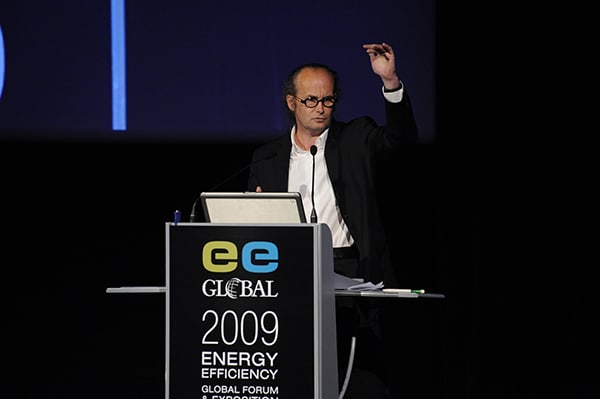
Hon. Claude Turmes, Member of European Parliament, Luxembourg speaks at EE Global in Paris.
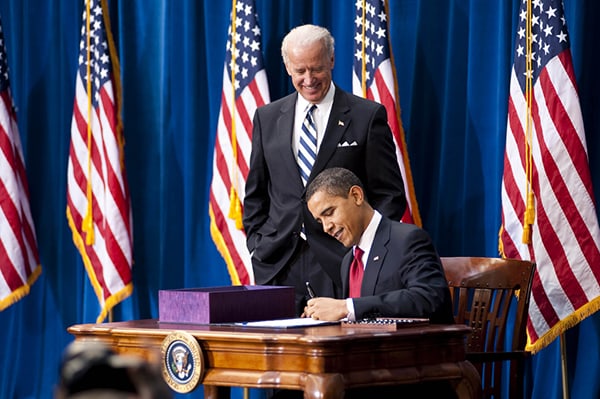
President Barack Obama signs the American Recovery and Reinvestment Act.
2009
The American Recovery and Reinvestment Act of 2009 marks the single largest investment in energy efficiency in history, with $25 billion dedicated to programs including weatherization, expanded tax incentives, and federal green buildings.
2009
2010
2010
The International Codes Council (ICC) adopts a landmark national model that increases efficiency in commercial buildings by 30%.

Alliance Honorary Board Chair Sen. Jeanne Shaheen introduces The Energy Savings and Industrial Competitiveness Act

Alliance President Kateri Callahan (left) joins Sens. Jeanne Shaheen and Rob Portman for the bill’s introduction.
2011
On May 12, 2011, the Alliance’s Honorary Board Chair Sen. Jeanne Shaheen (D-N.H.), and Sen. Rob Portman (R-Ohio) announce the introduction of The Energy Savings and Industrial Competitiveness Act.
2011
2012
2012
The Alliance launches the Commission on National Energy Efficiency Policy to reach consensus on a set of public policies that, when enacted, would have the potential to double U.S. energy productivity by 2030.
2013
President Obama unveils his Climate Action Plan, which adopts the Commission’s goal of doubling U.S. energy productivity by 2030.
"Let’s cut in half the energy wasted by our homes and businesses over the next 20 years."
- President Obama, State of the Union Address.
2013
2014
2014
The Alliance launches the Accelerate Energy Productivity 2030 partnership with the U.S. Department of Energy and Council on Competitiveness Energy aimed at catalyzing action at all levels of government and in the private sector to double energy productivity.

Alliance President Kateri Callahan (second from right) joins President Barack Obama to sign the Energy Efficiency Improvement Act.
2015
The Alliance is on-hand to witness President Obama sign the Energy Efficiency Improvement Act of 2015, which provides incentives to cut energy use in commercial buildings, manufacturing plants, and homes.
2015
2015
2015
CarbonCount™, a tool developed by the Alliance to score the carbon impacts of green bonds, wins the prestigious Finance for Resilience competition at the Bloomberg New Energy Finance Summit.

2016
The Alliance releases "Greater than the Sum of its Parts: The Case for a Systems Approach to Energy Efficiency," a groundbreaking report that shifts the view of building efficiency from individual components to the interaction of various building systems.
2016
2016
2016
The first annual Energy Efficiency Day is celebrated to promote the multiple benefits of energy efficiency.
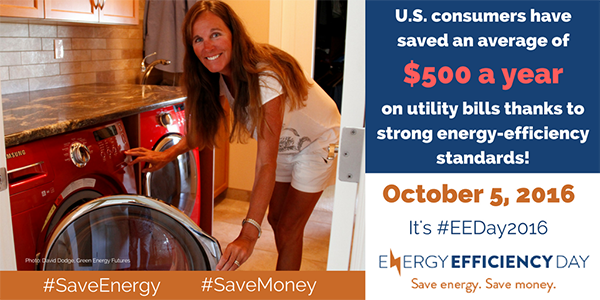
The Alliance and energy efficiency partners promote EE Day on social media.
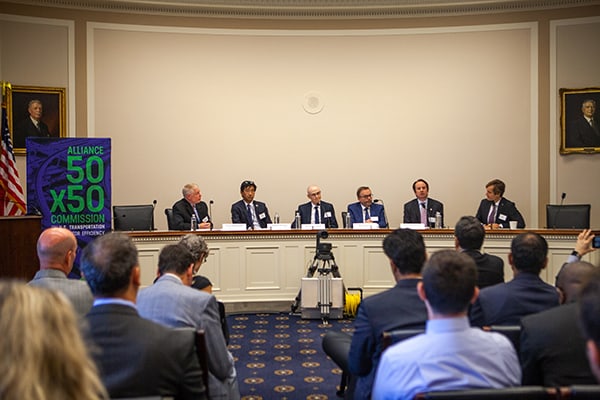
50x50 Commissioners speak at the recommendations release event on Capitol Hill.
2018
The Alliance’s 50x50 Commission on U.S. Transportation Sector Efficiency releases 50x50: Reinventing U.S. Mobility," a set of bipartisan policy recommendations to move America toward the goal of reducing energy use 50% by 2050, while meeting future mobility needs.
2018
2019
2019
The Alliance launches the Active Efficiency Collaborative, an initiative that explores new and expanding opportunities for efficiency presented by digital technologies. The first annual Energy Efficiency Day is celebrated to promote the multiple benefits of energy efficiency.
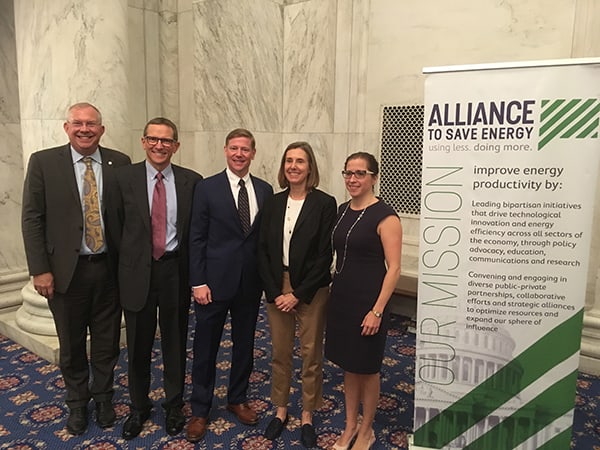
Active Efficiency Steering Committee members at launch event.
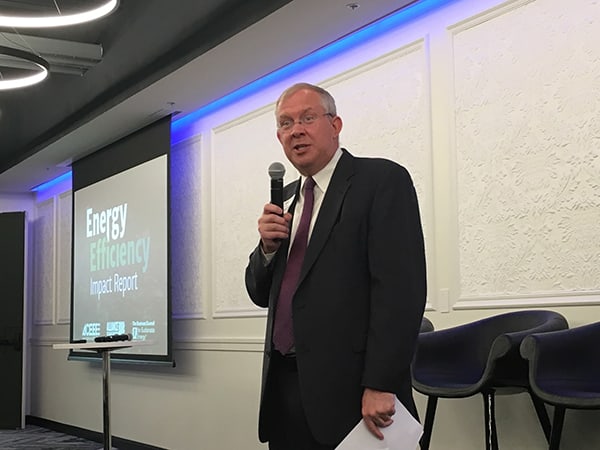
The Alliance hosts a press briefing on the inaugural Energy Efficiency Impact Report.
2019
The Energy Efficiency Impact Report - a one-stop, digital report that summarizes the contribution of energy efficiency to our society – is released by the Alliance, American Council for an Energy-Efficiency Economy, and the Business Council for Sustainable Energy.
2019
2020
2020
President Donald Trump signs into law the bipartisan Energy Act of 2020, which includes important investments in energy efficiency programs and provisions from Honorary Board Chair Sen. Jeanne Shaheen (D-N.H.) and Sen. Rob Portman’s (R-Ohio) Energy Savings and Industrial Competitiveness Act.
Alliance Honorary Advisor Sen. Lisa Murkowski speaks in favor of the Energy Act of 2020.

Alliance President Paula Glover introduces the 2021 Stars of Energy Efficiency awardees.
2021
The energy efficiency community gathers in person for the first time in two years to celebrate the Alliance’s 2021 Stars of Energy Efficiency.
2021
2021
2021
President Joe Biden signs into law the bipartisan Infrastructure Investment and Jobs Act, the largest public works legislation in decades, including billions of dollars for energy efficiency programs such as the Weatherization Assistance Program and building codes implementation.
